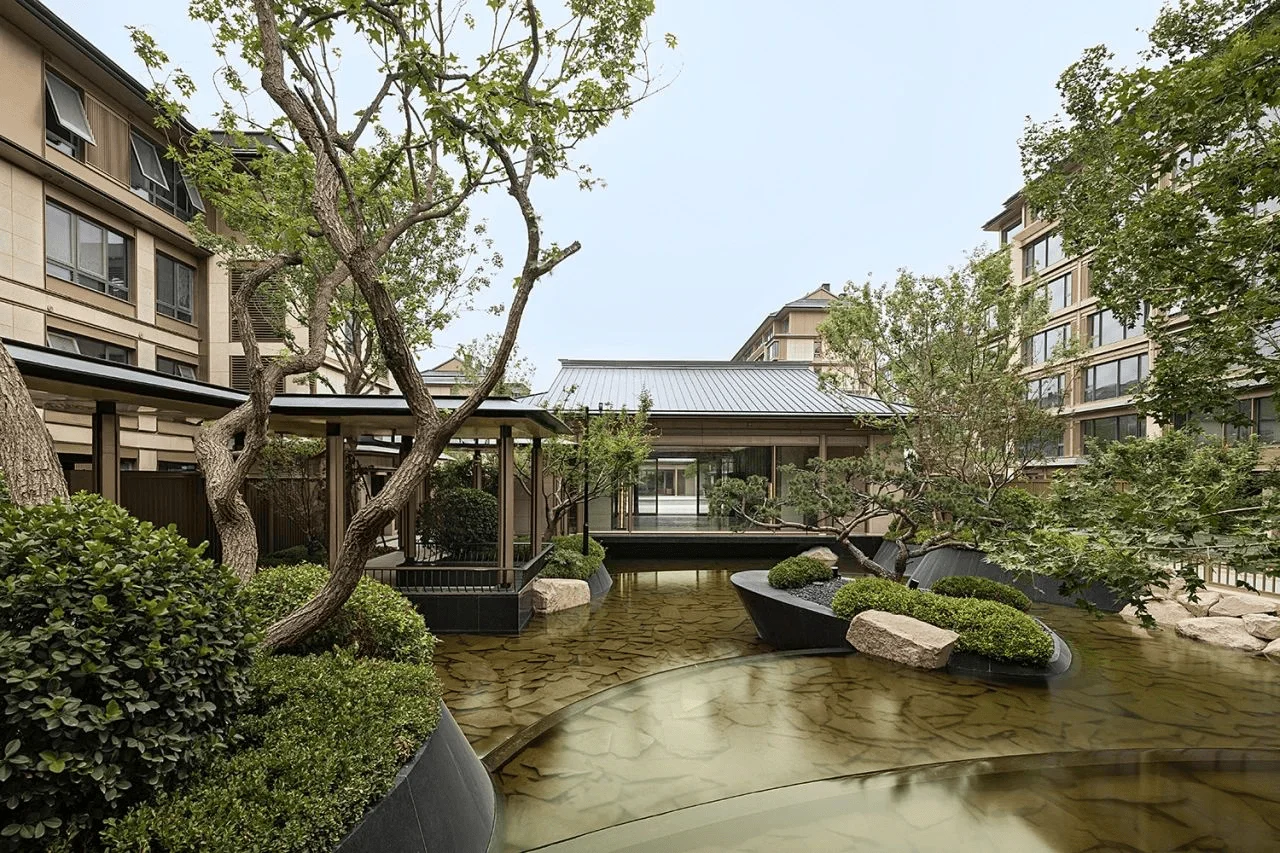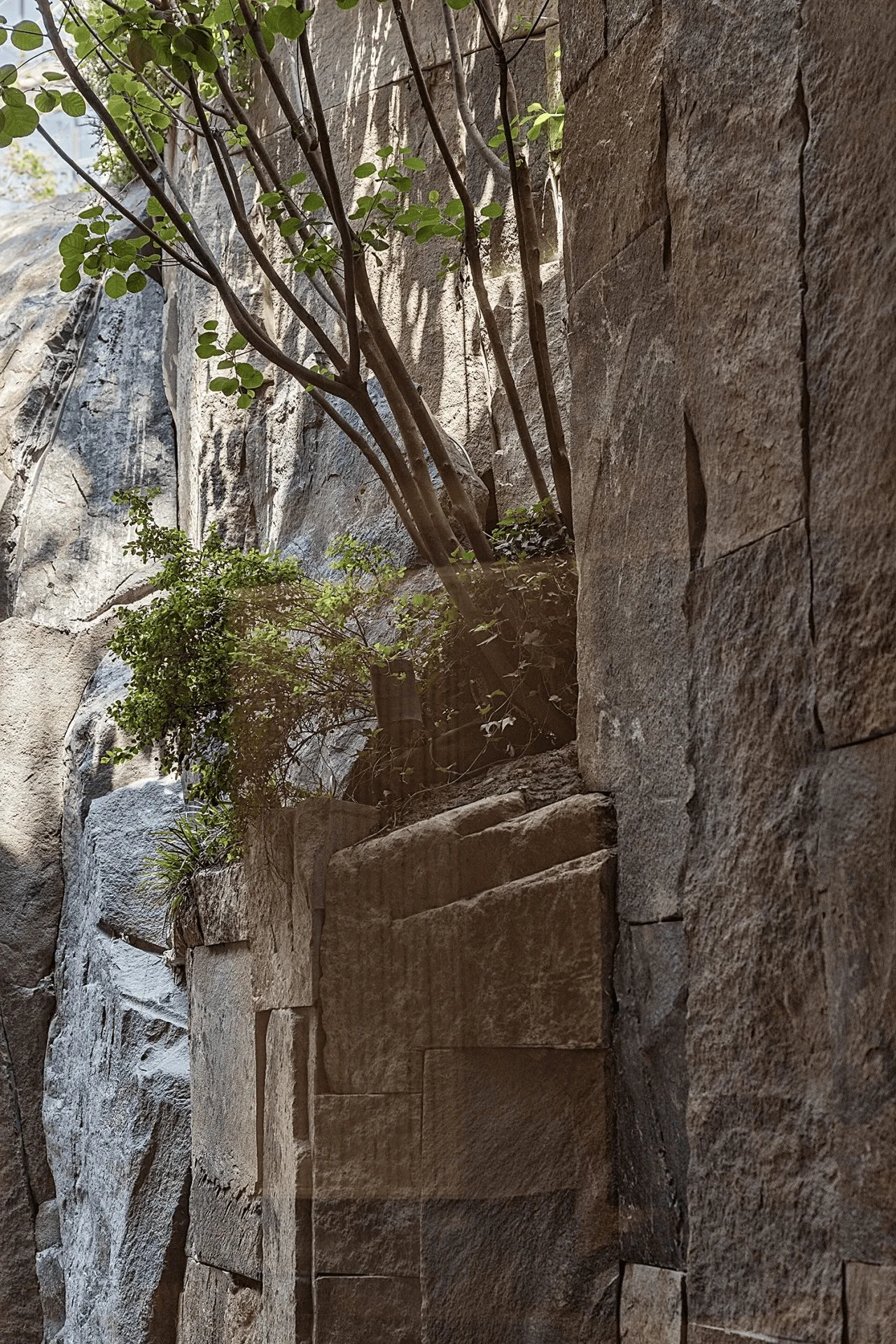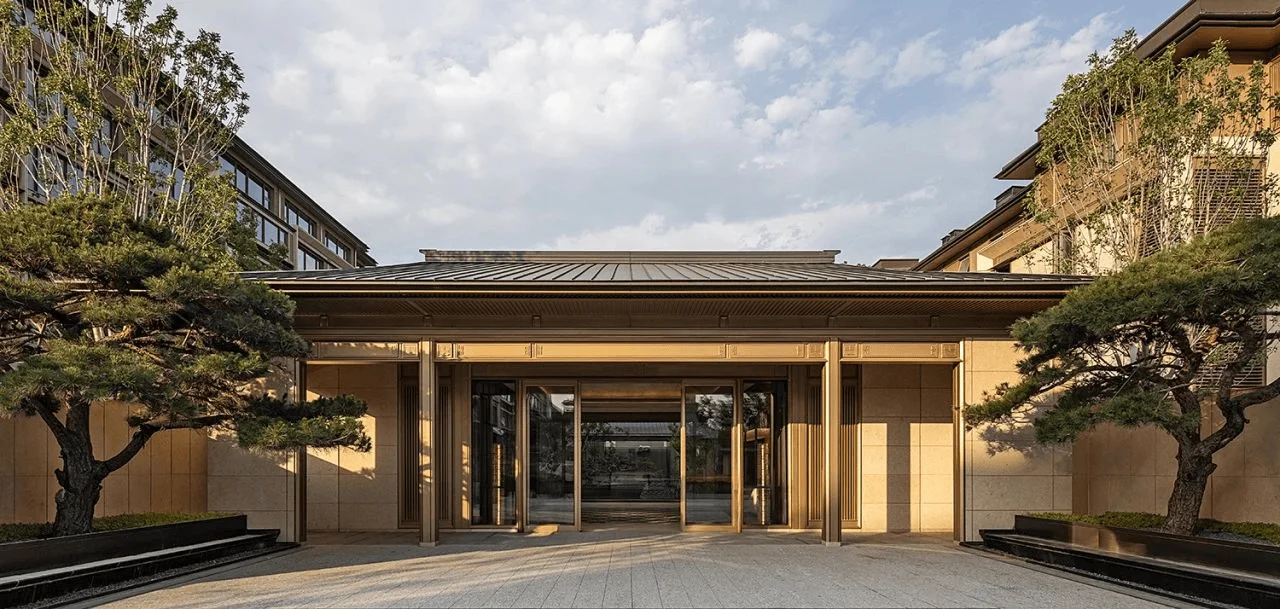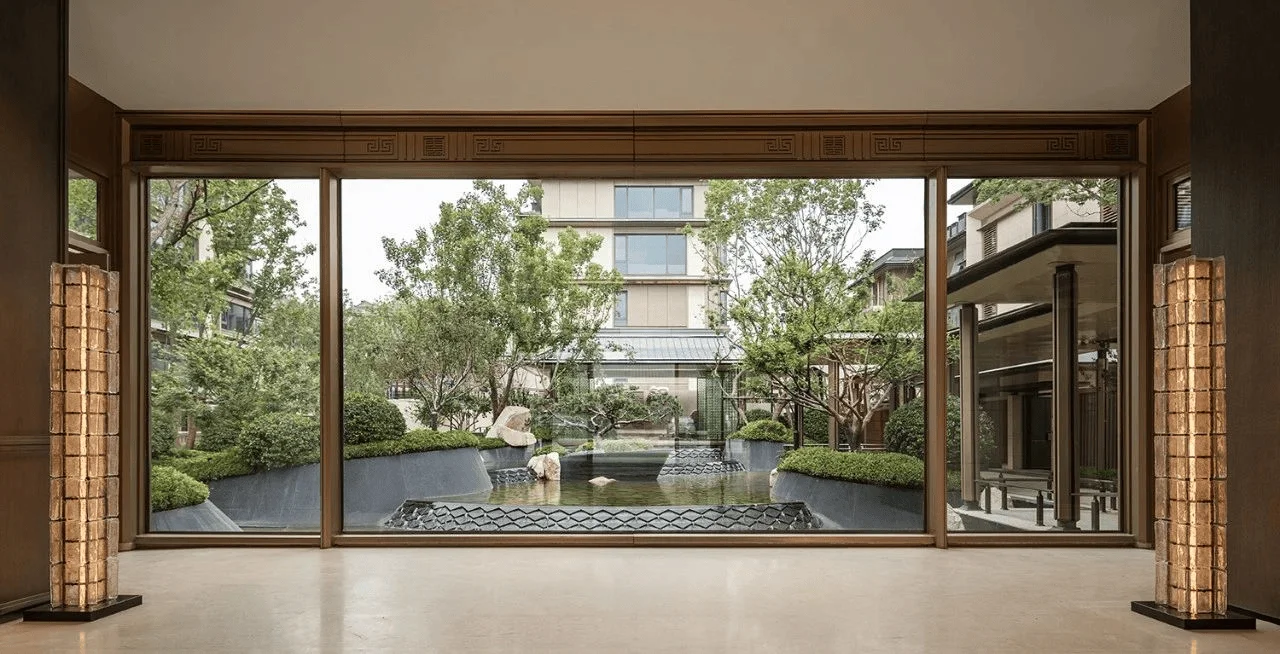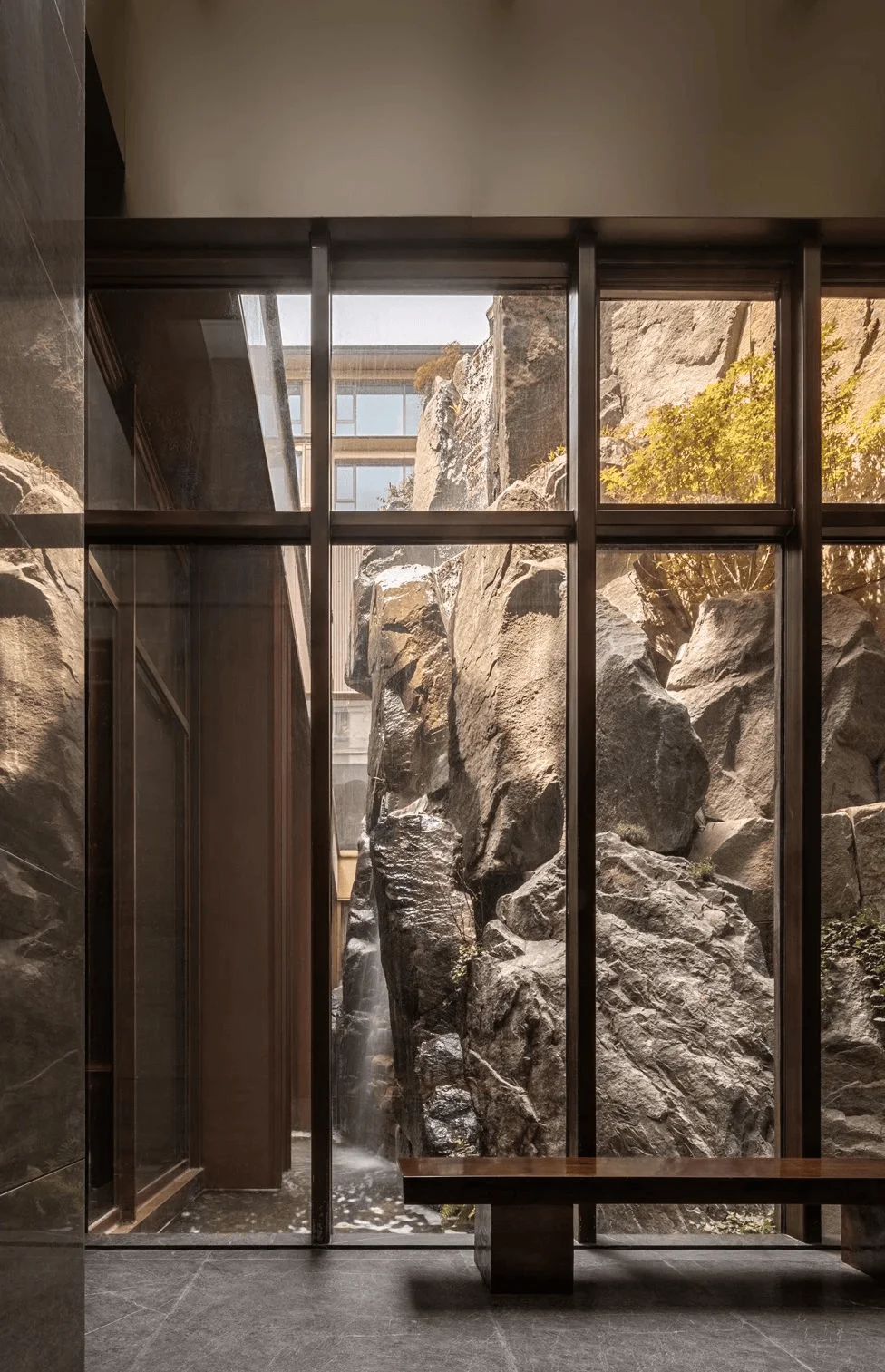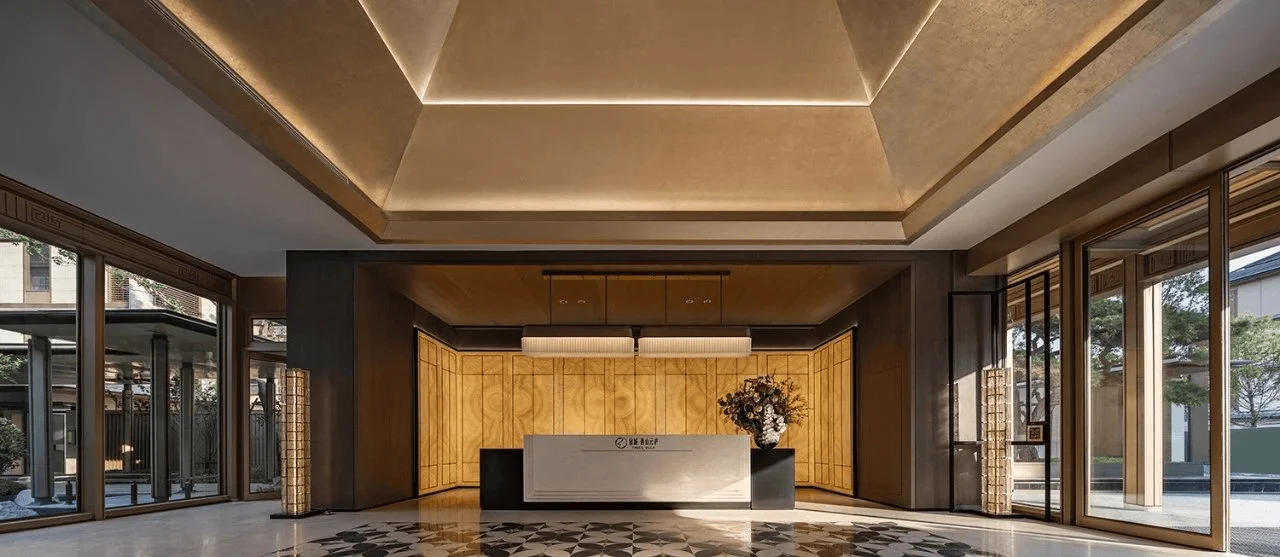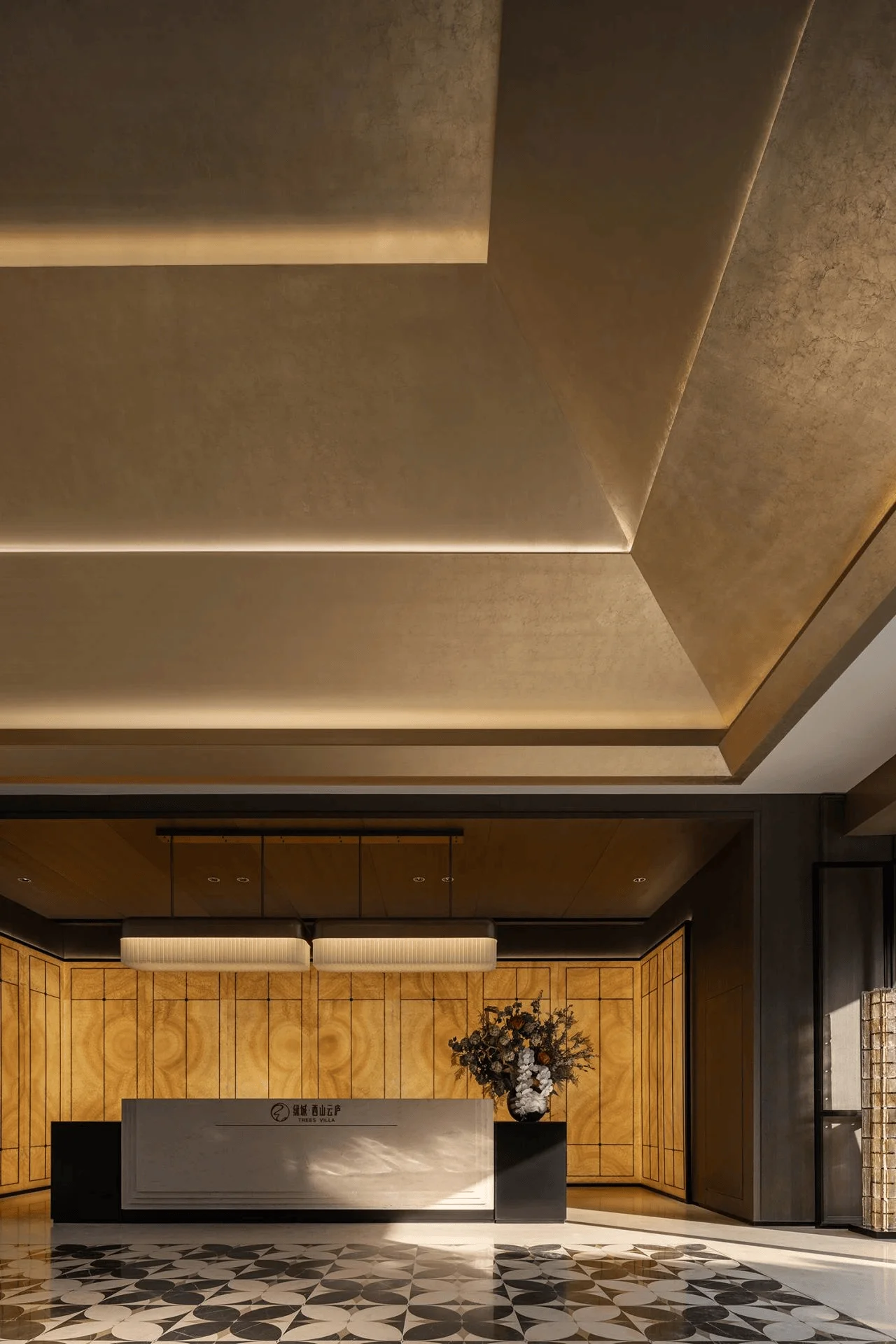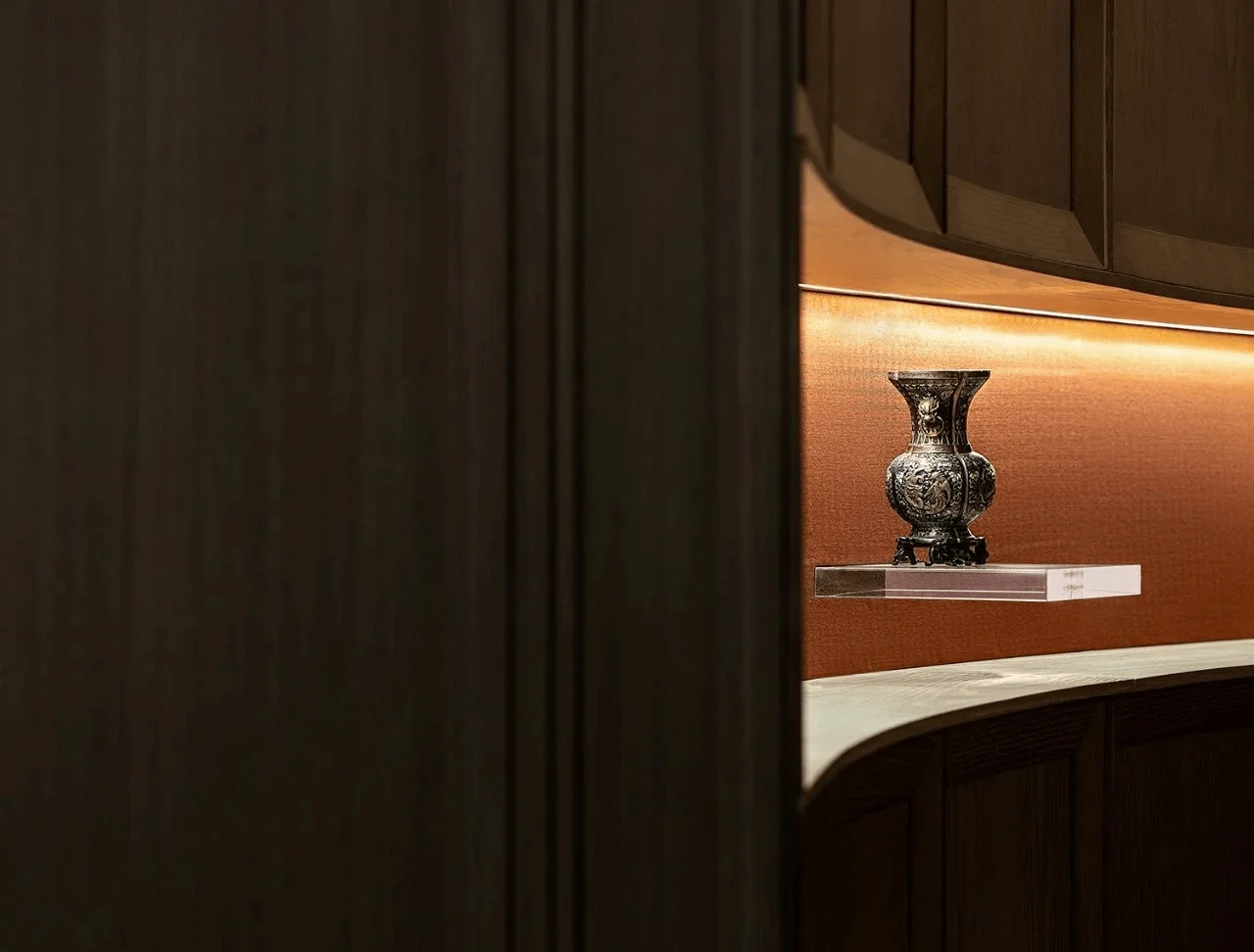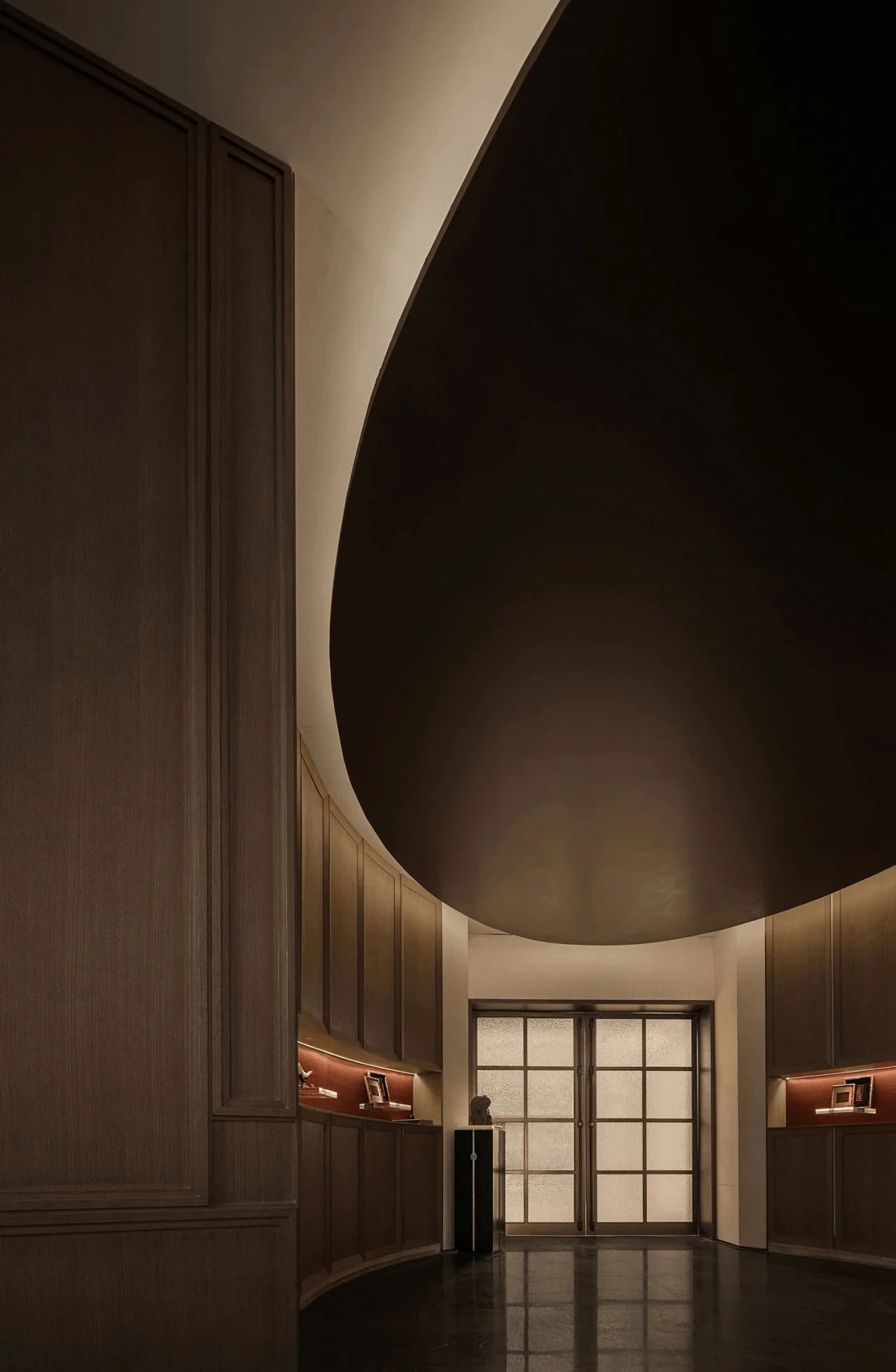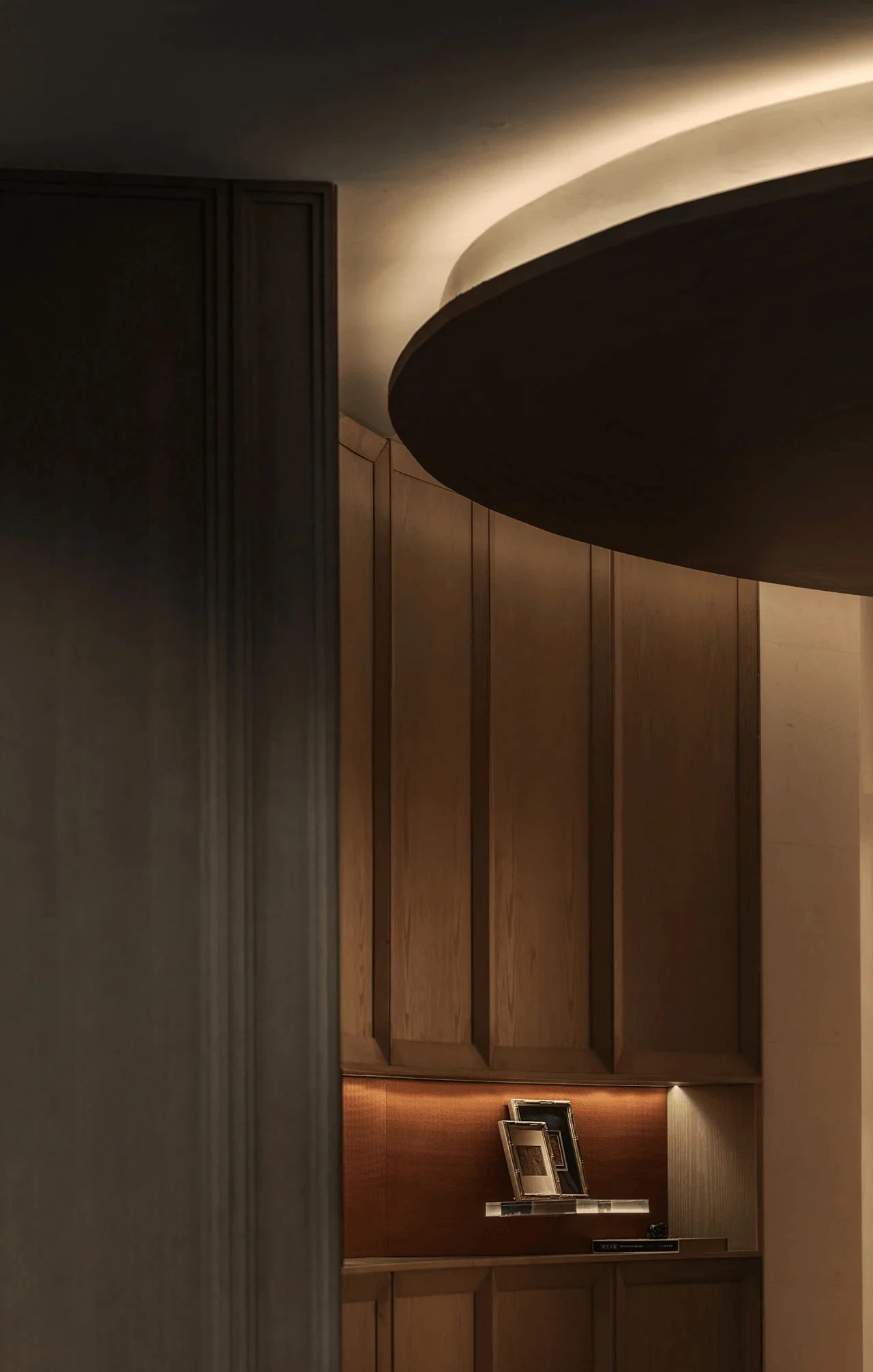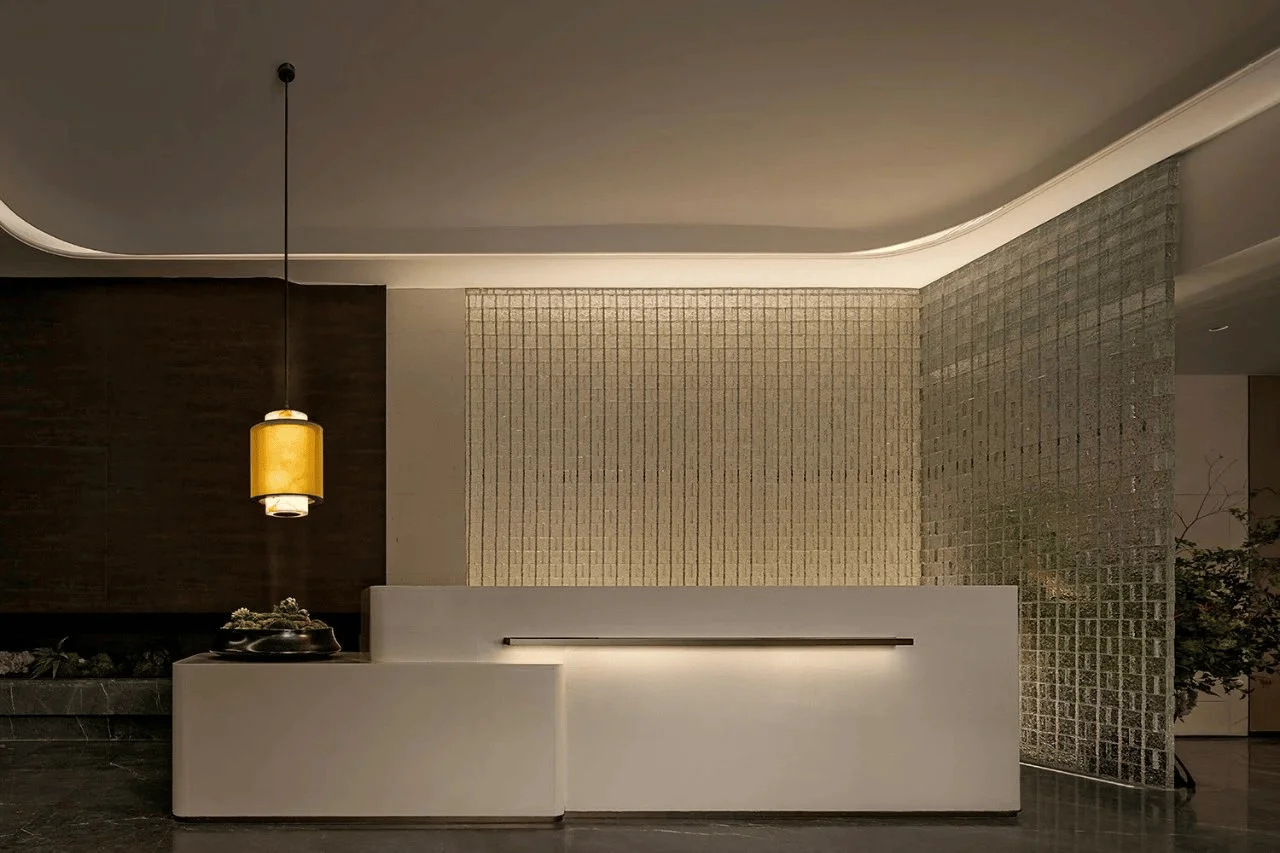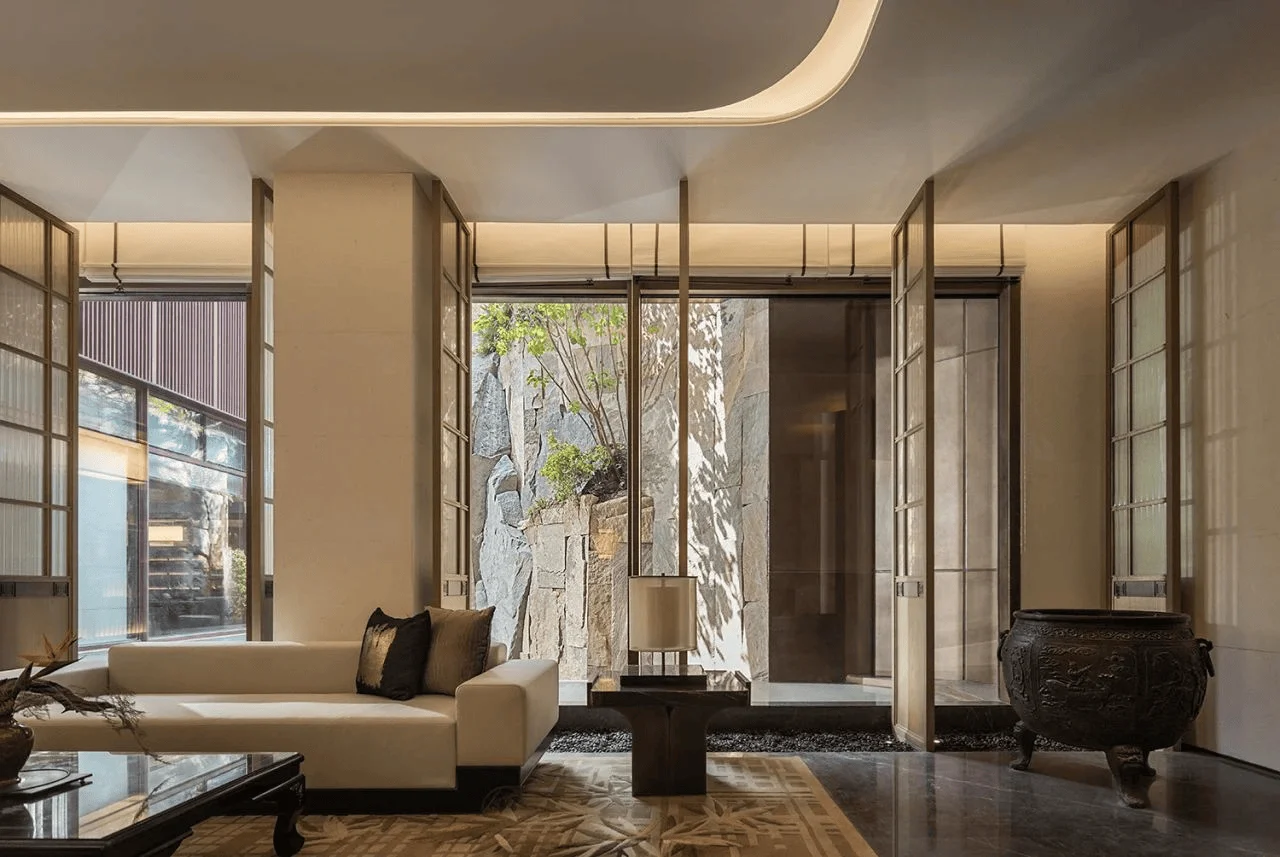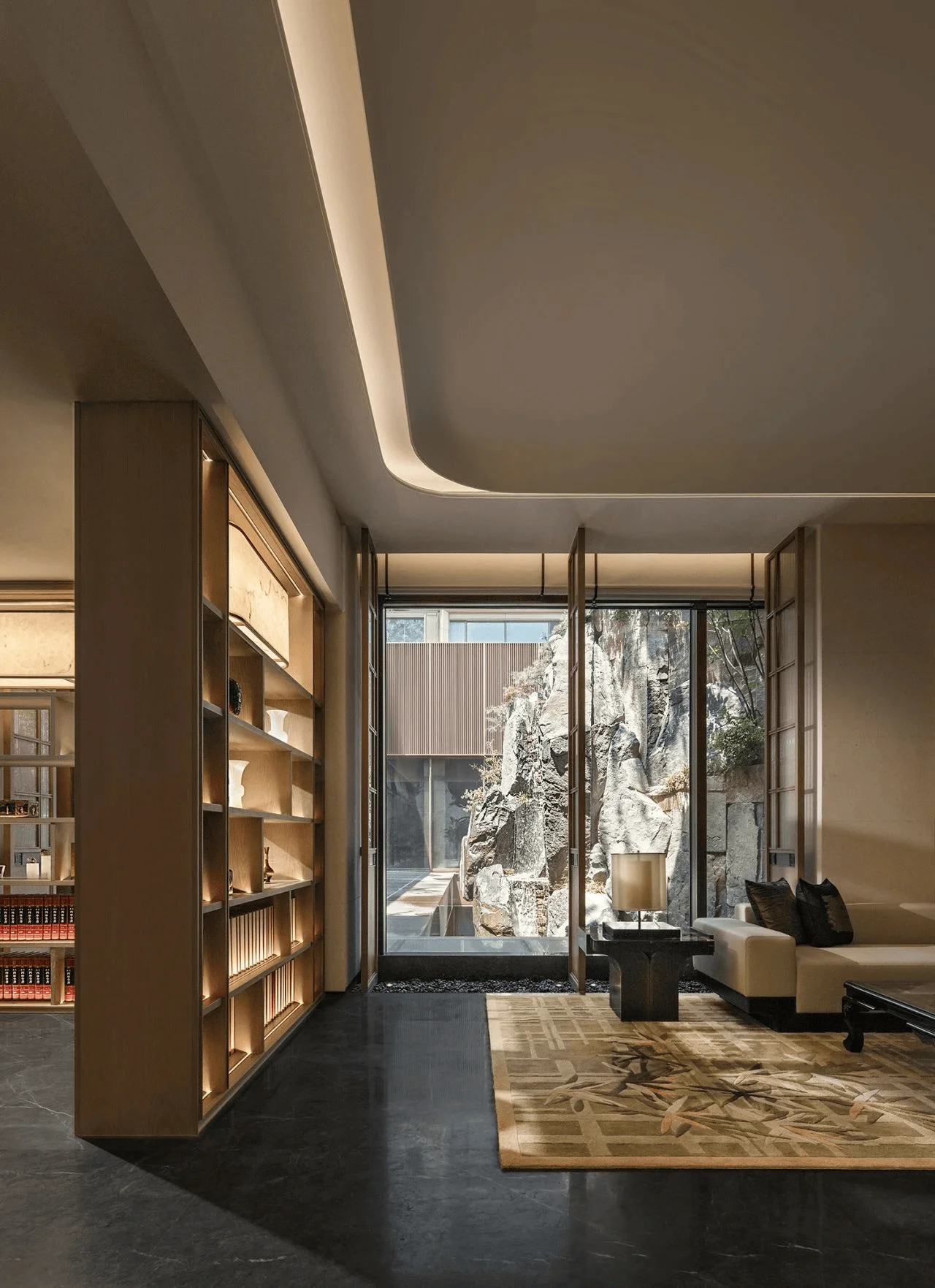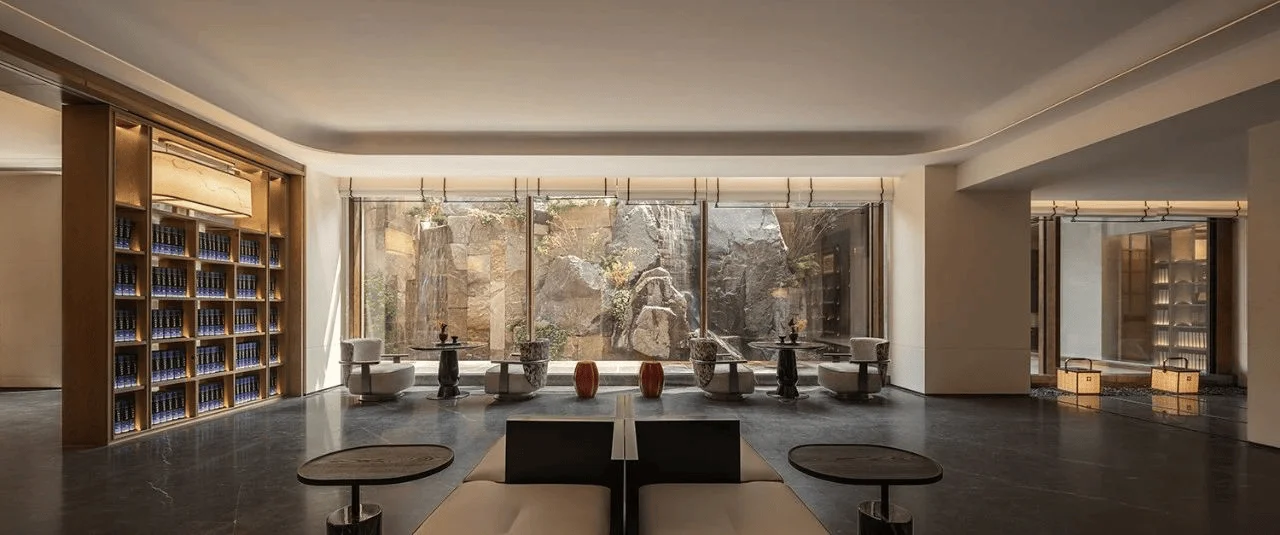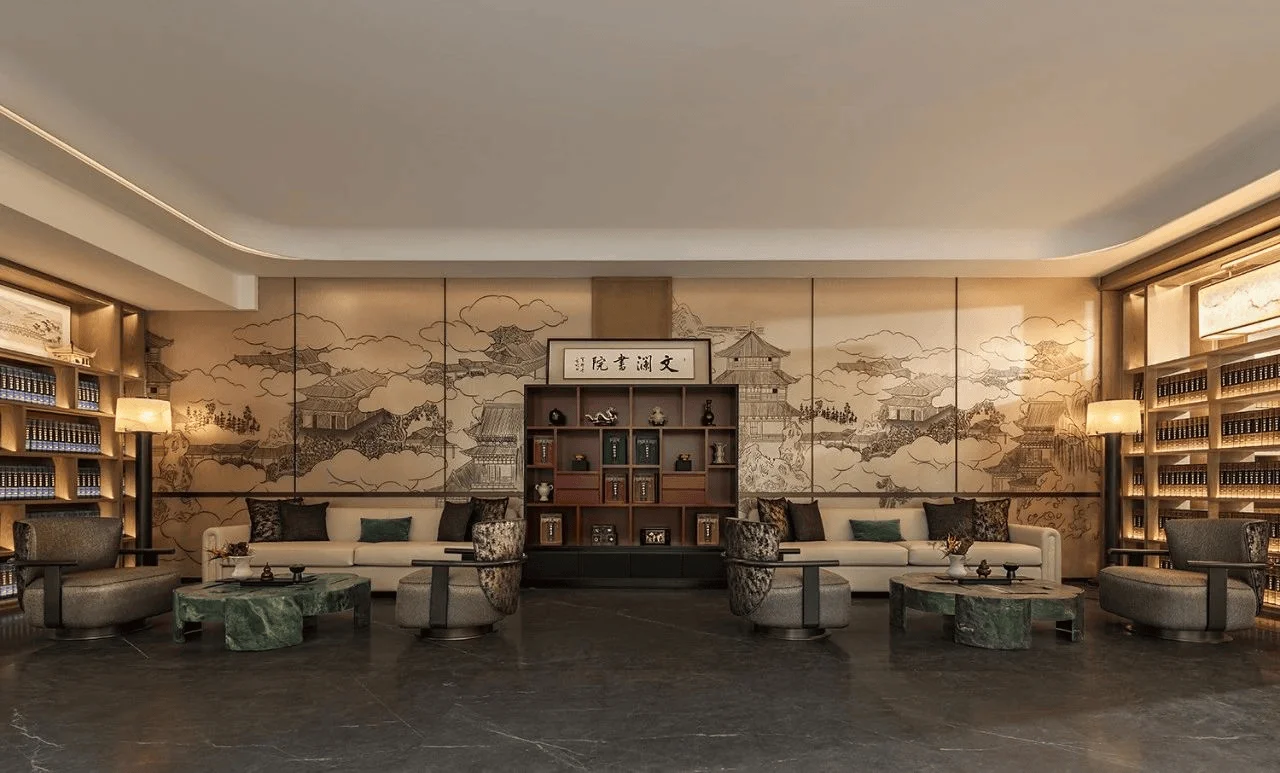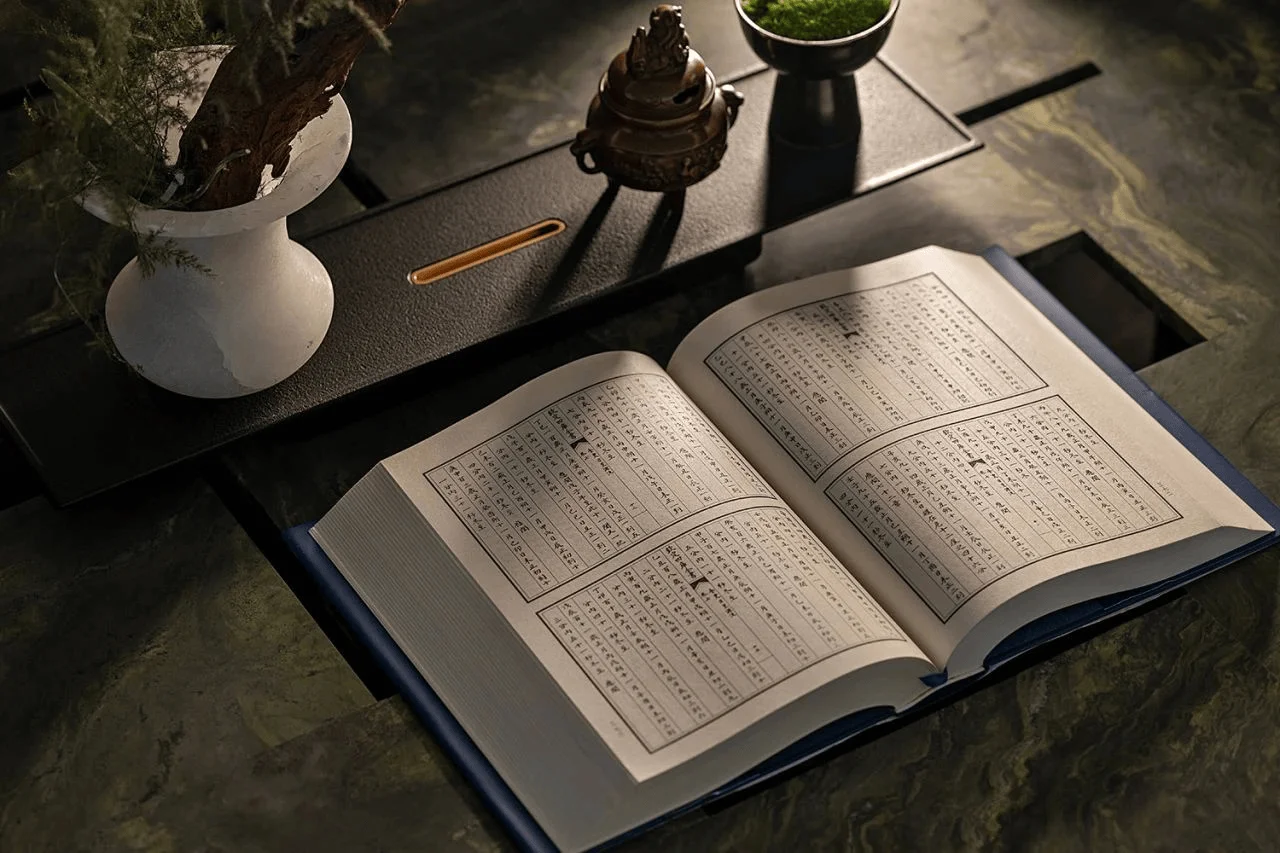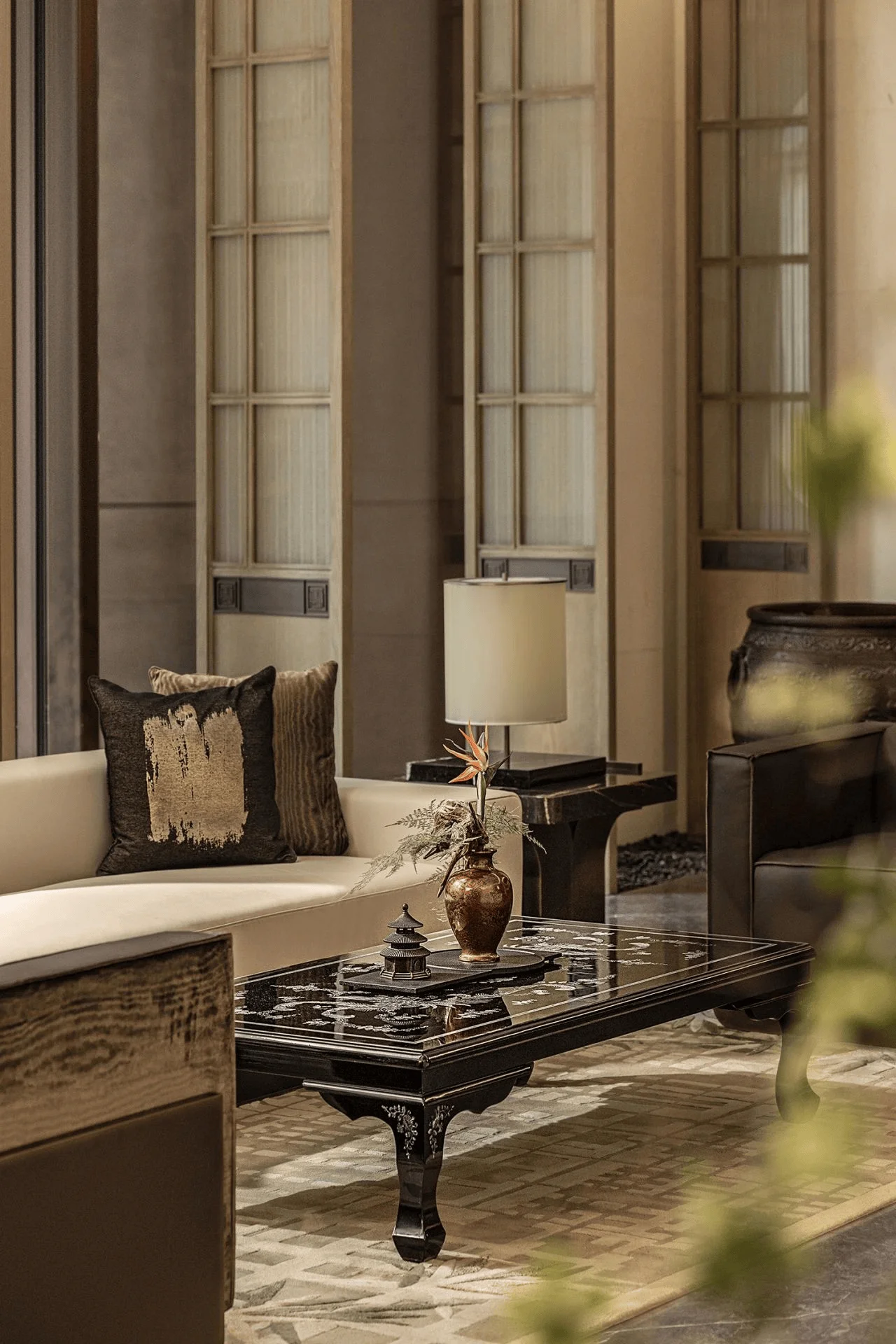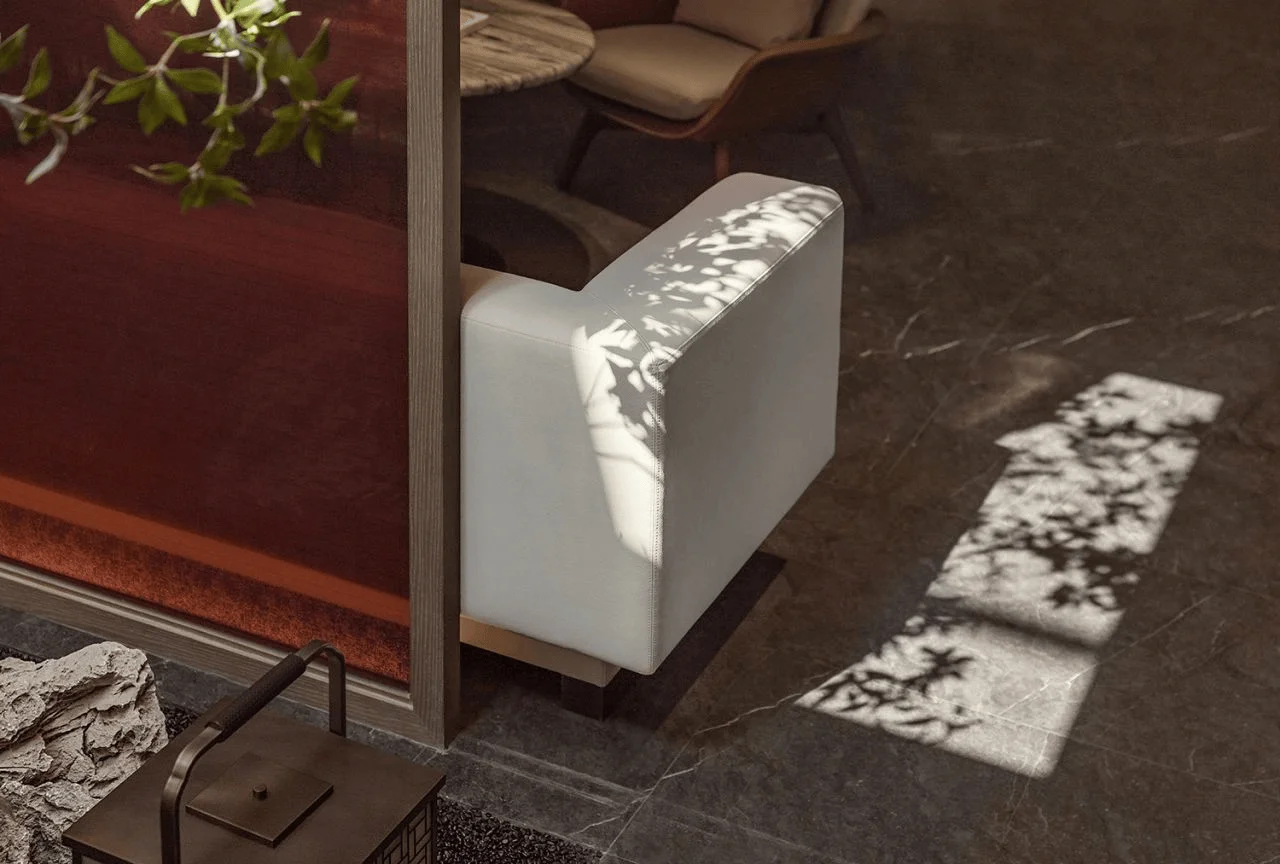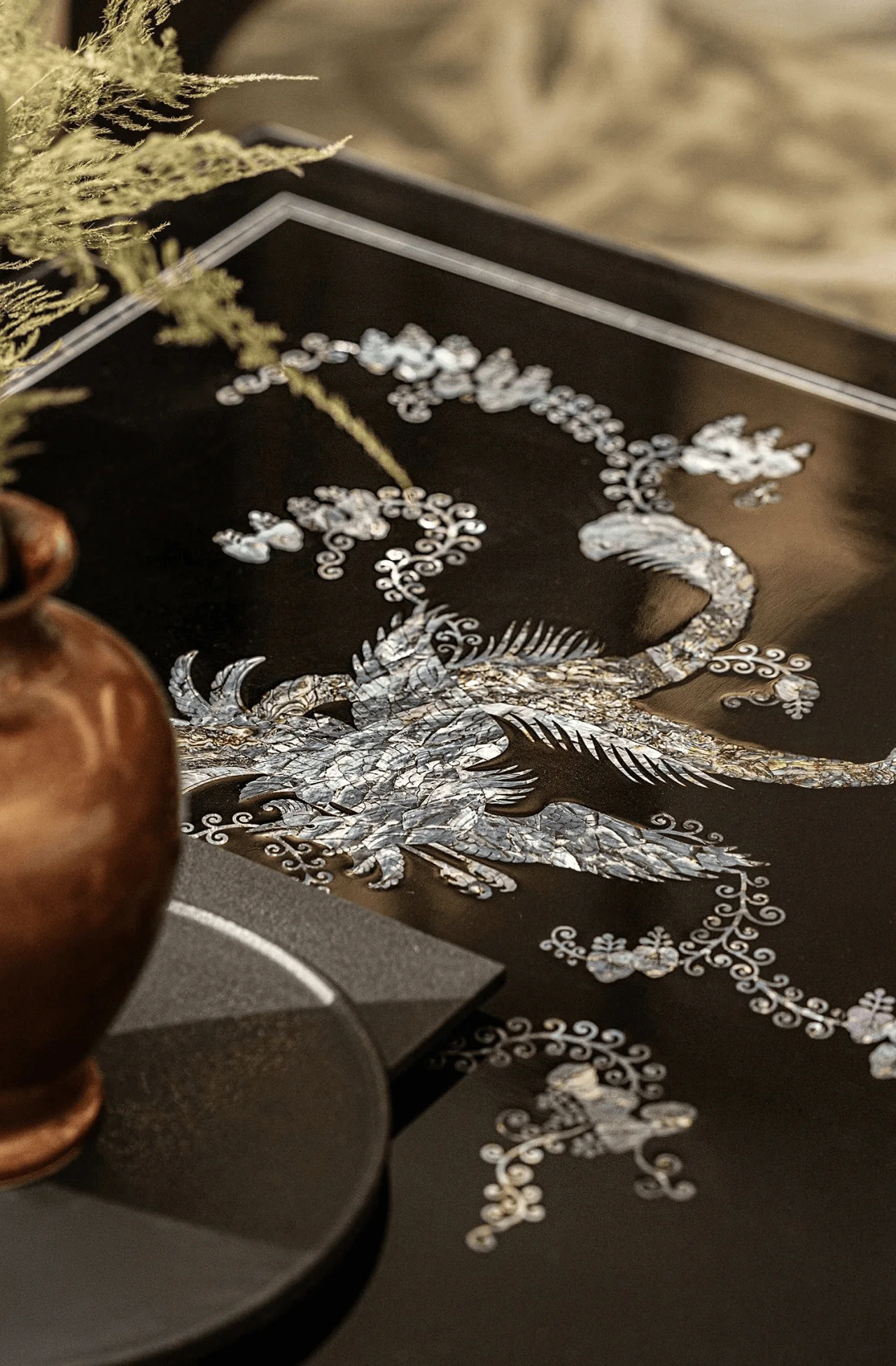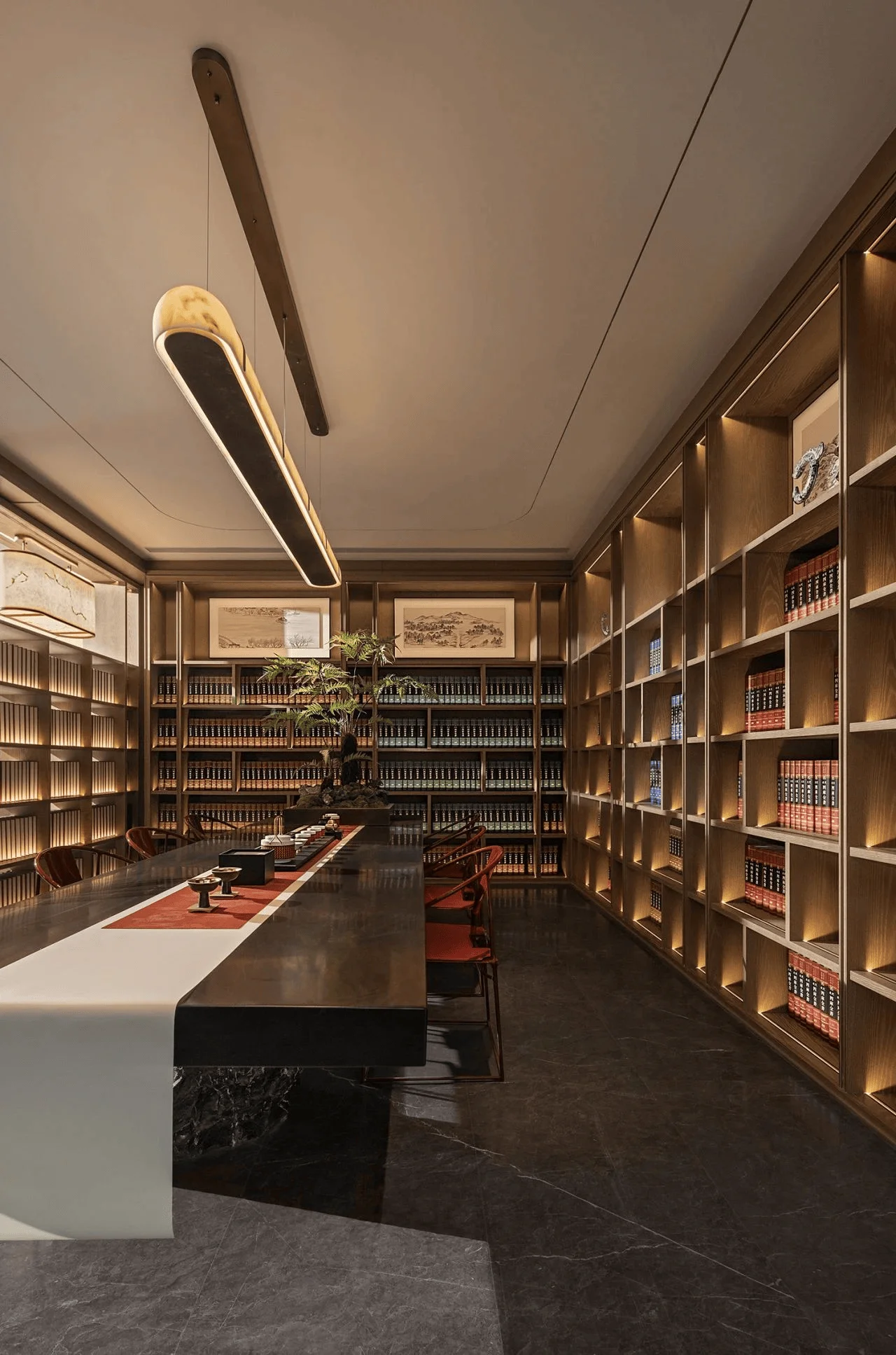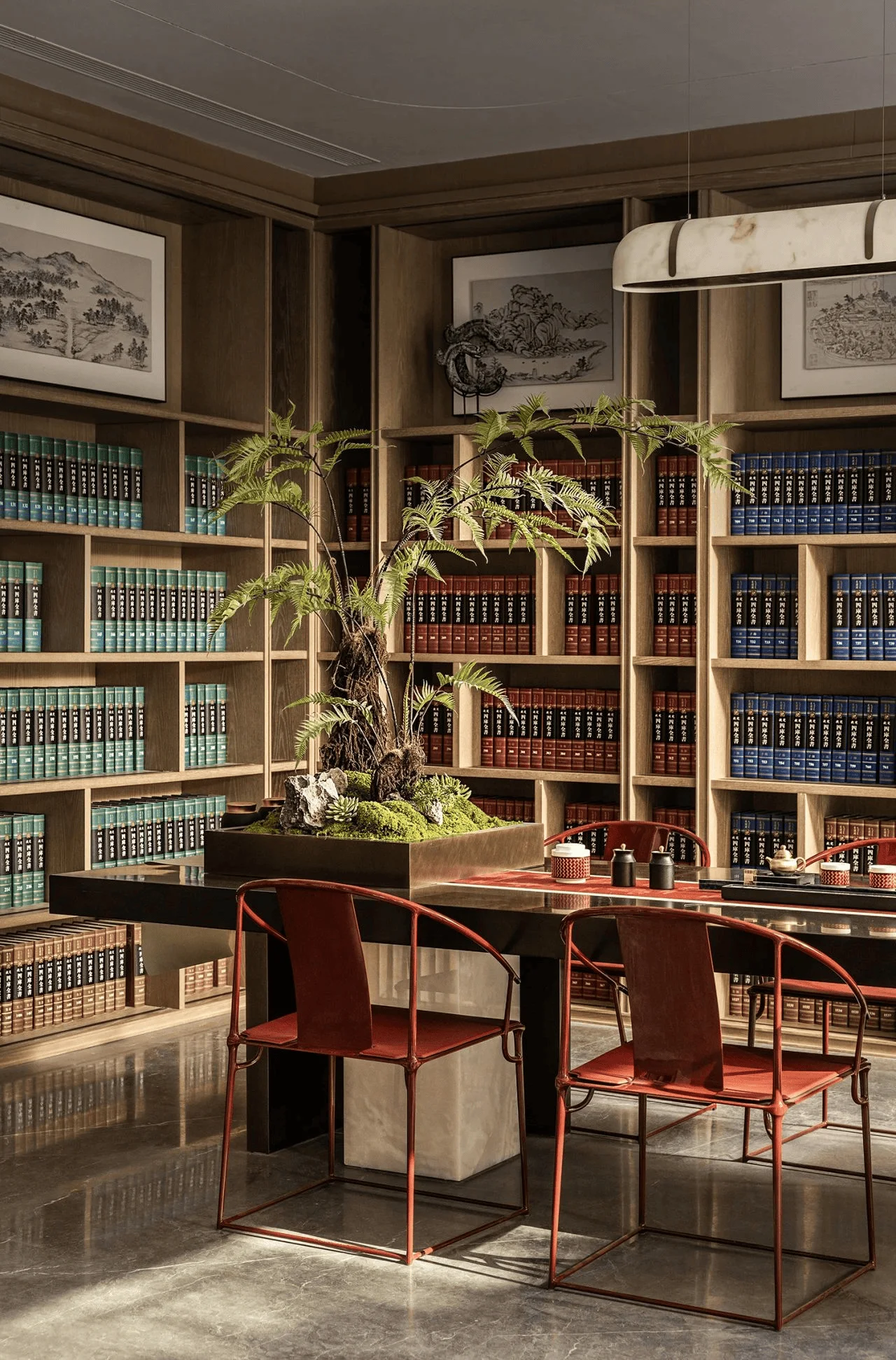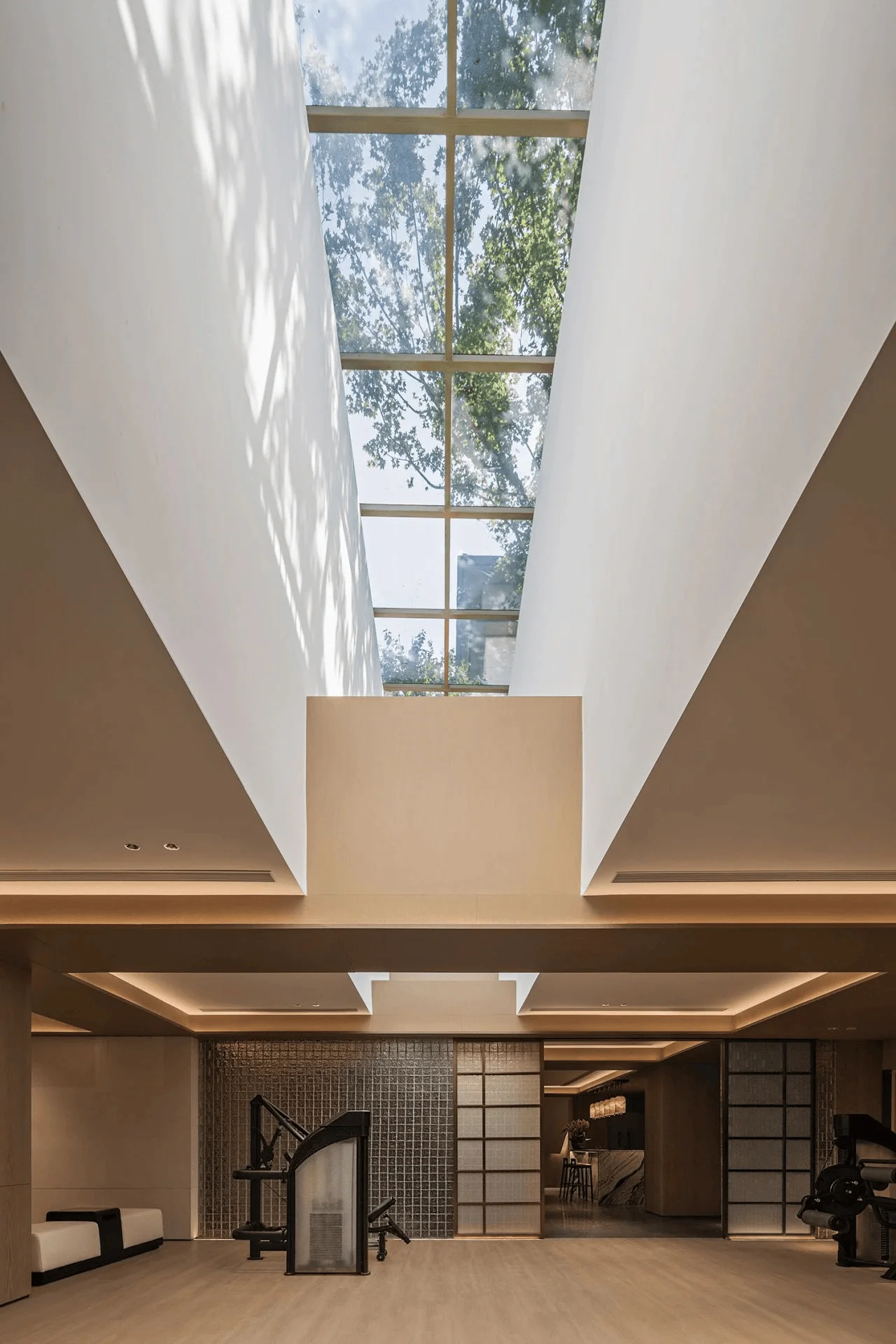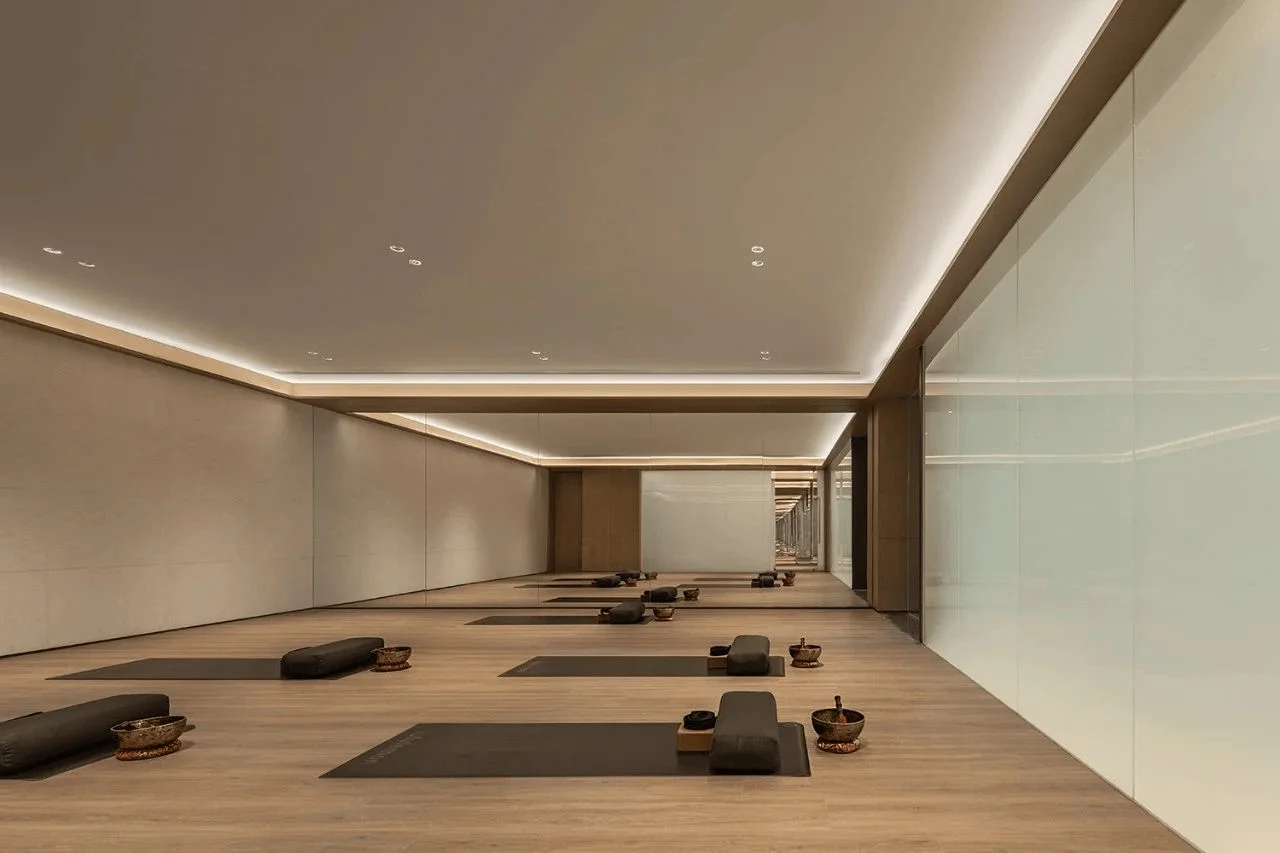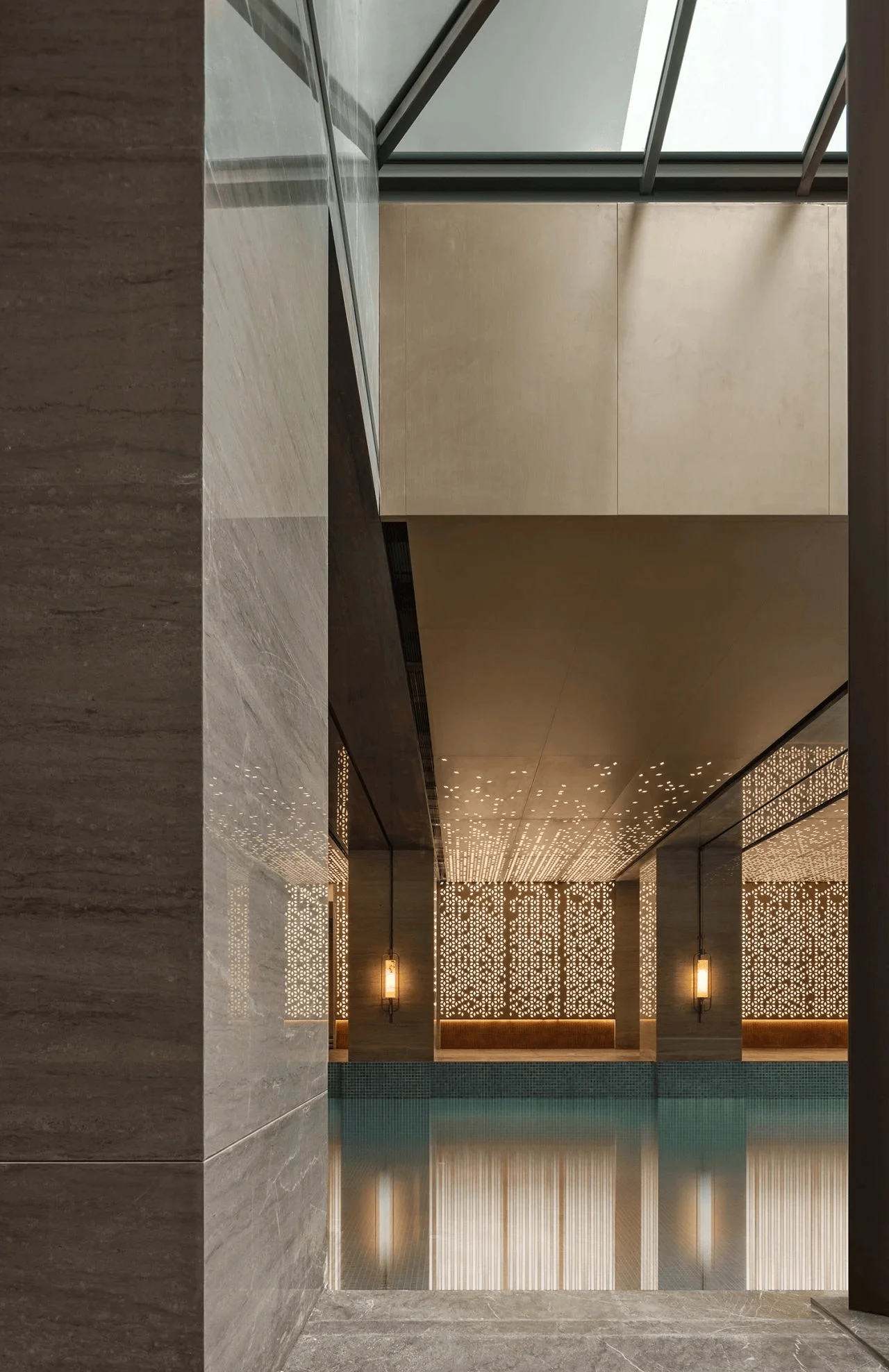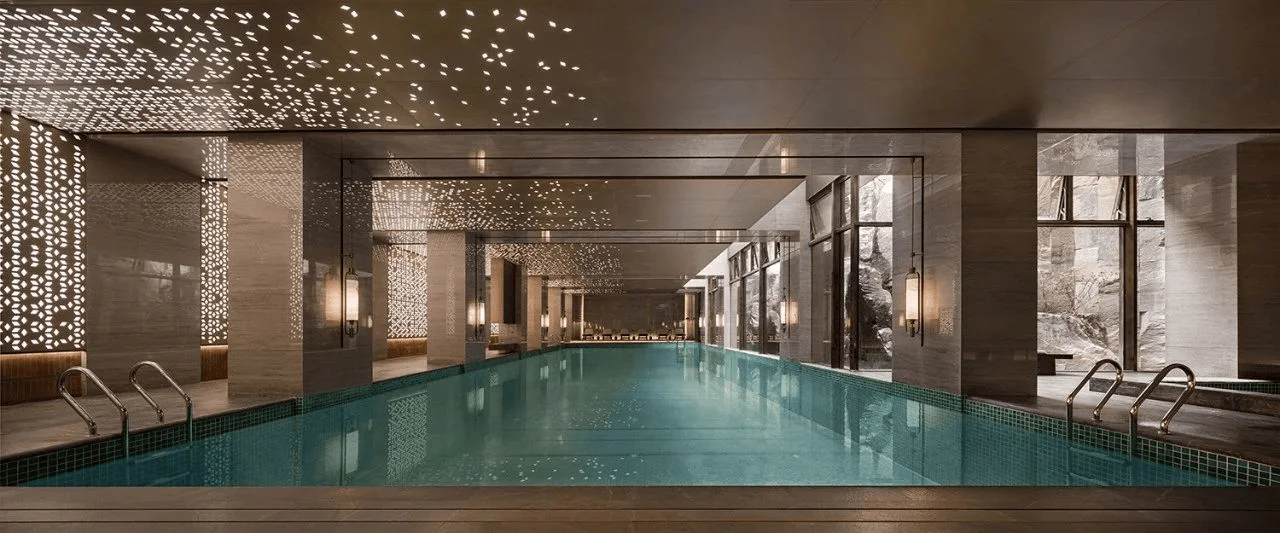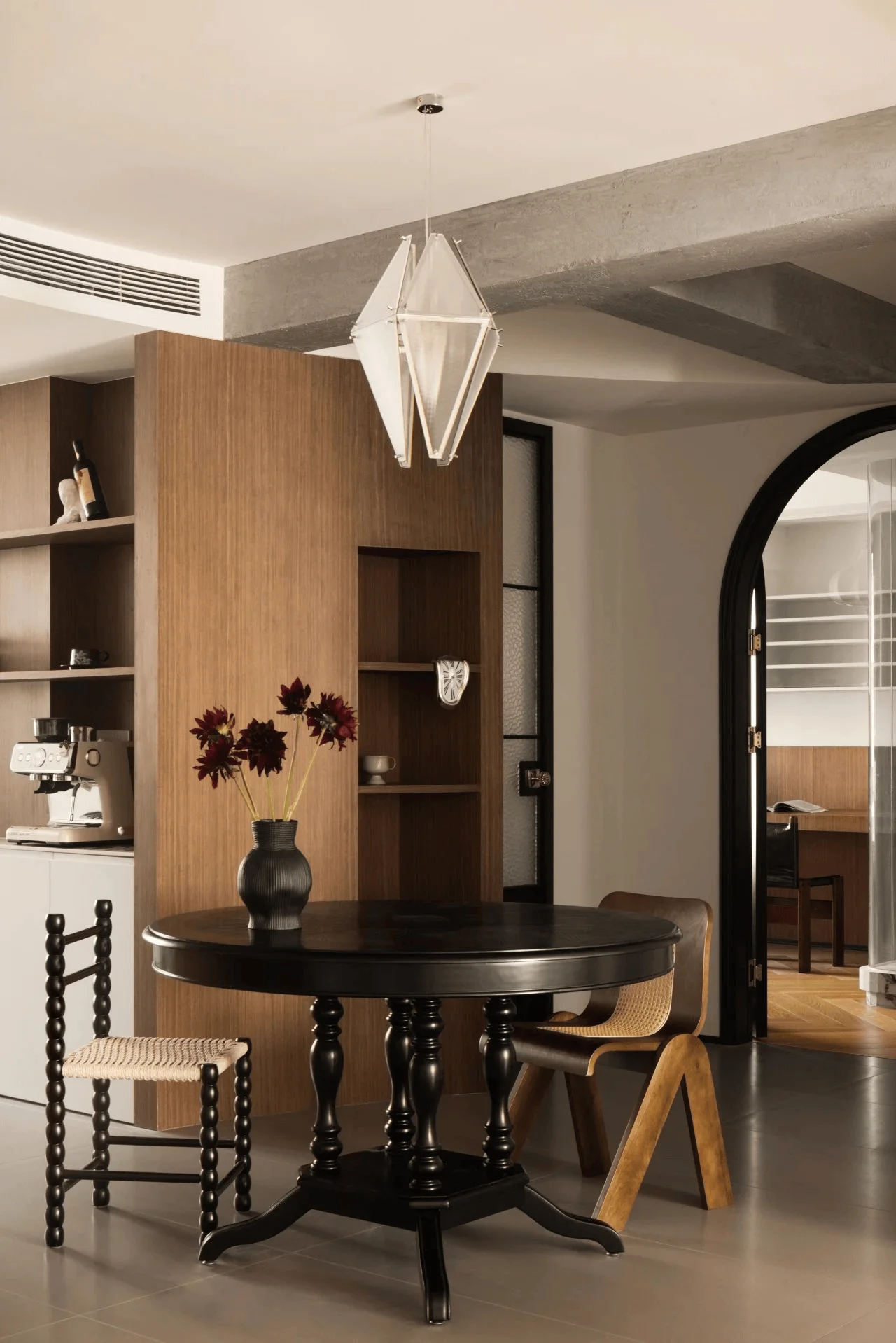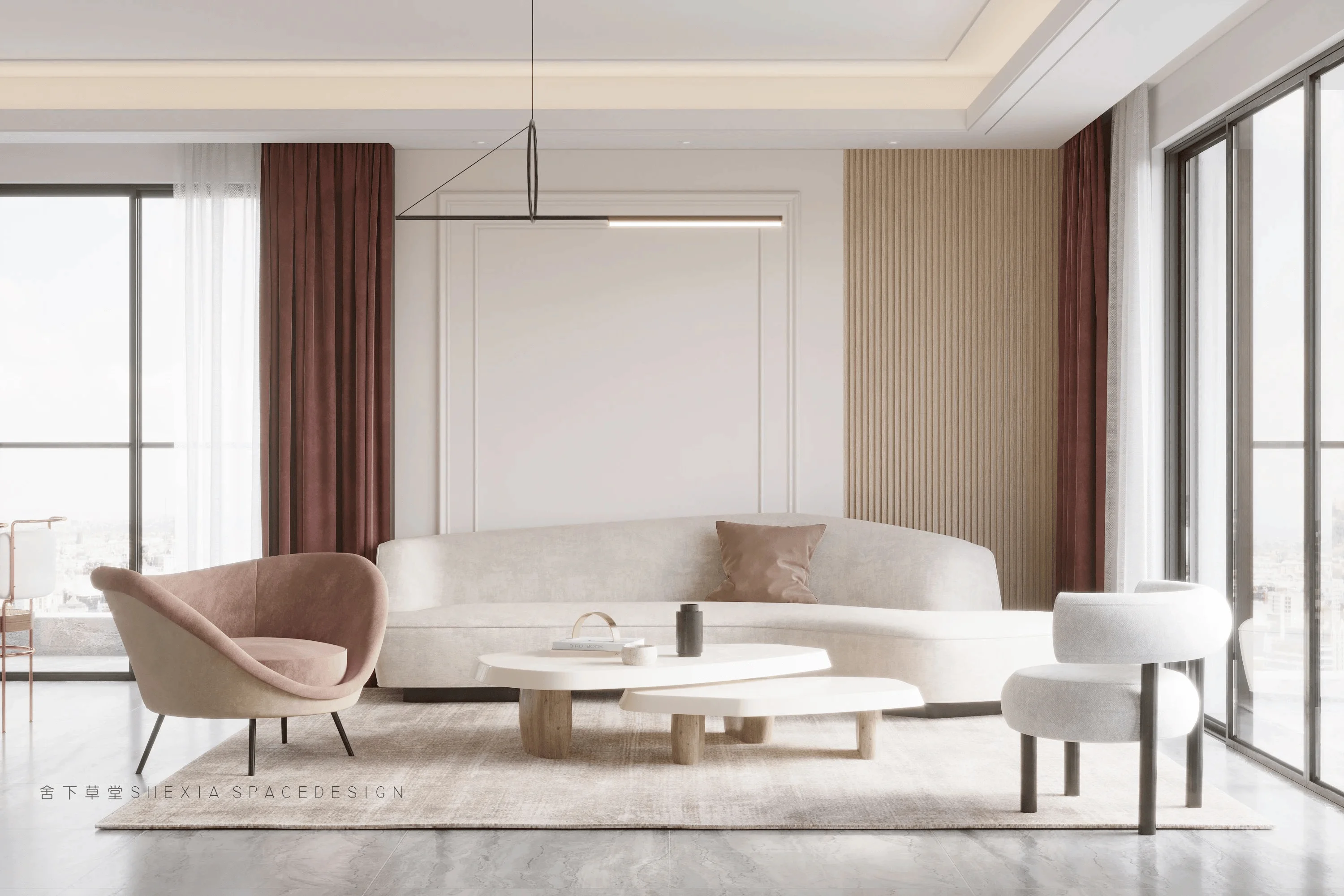Xishan Yunlu Clubhouse interior design brings ancient Chinese aesthetics to modern space.
Contents
Project Background: Blending Ancient History with Modern Design
Located in the foothills of the Western Hills in Beijing, the Lvcheng Xishan Yunlu Clubhouse embraces the spirit of its surrounding natural and historical context. With a focus on traditional Chinese aesthetics and design principles, the project seeks to create a space that seamlessly blends the rich cultural heritage of the region with contemporary living, effectively becoming a cultural hub for local residents and visitors. This design project is a testament to SRD DESIGN’s ability to carefully blend ancient Chinese landscape architecture and the artistic heritage of Beijing into modern interior design. The ‘Xishan Twelve Views’, along with the symbolism of ancient trees, are integral elements within the overall design language. This clubhouse embodies the essence of traditional Chinese design and landscape architecture, emphasizing the natural beauty of the surroundings and providing a contemplative and peaceful environment. Interior design within the modern context of the building continues to create a harmonious blend of the past and present. The entire project, from its initial concept to its execution, is an example of respecting historical and cultural narratives within a modern framework. Interior design trends with its thoughtful consideration of tradition.
Design Concept and Goals: A Modern Interpretation of Traditional Chinese Design
The interior design concept centers on the theme of “ancient trees in memory”, inspired by the ancient trees surrounding the site, which are living symbols of time and history. The design integrates natural elements such as water features, rock formations and lush landscaping, while also incorporating traditional Chinese aesthetics into modern design aesthetics. This project is a modern take on a traditional style, as the designers have taken many traditional elements and adapted them to a contemporary setting. The interior design style embodies a design that is at once modern and timeless, utilizing a variety of materials and textures in a unique way. This project’s modern interpretation of traditional Chinese design highlights an interior design that offers a unique experience that is reflective of the culture and history of the region. This specific project can also be studied as a case study for contemporary design that respects historical and cultural references in interior design in modern contexts. This also emphasizes the ability of the interior design to create a sense of place, using a variety of elements to evoke a feeling of historical continuity in this particular region of China.
Functional Layout and Space Planning: A Multifaceted and Progressive Environment
The clubhouse is designed with a series of interconnected spaces that offer diverse experiences, creating a progression from one area to another. This approach is reflected in the use of ‘four major gardening techniques’ – layering mountains, arranging water, strolling through gardens, and embracing trees – which create a dynamic and multi-layered landscape. These core design techniques provide a connection between the interior space and the surrounding landscape, creating a holistic sense of connection with nature. The team at SRD DESIGN has done an excellent job of designing a space that is not only aesthetically pleasing but also very functional and user-friendly. The flow of the spaces and the progression from one area to another are very well-considered. The space has also been carefully planned to accommodate a variety of activities and events, such as tea ceremonies, dining, and social gatherings. The design of the clubhouse emphasizes social interaction and community, creating a place where people can come together and enjoy the beauty of the surrounding landscape. The functionality of the interior design allows the space to be used in a multitude of ways. Interior design choices and details are carefully selected to emphasize the specific functions of the rooms and the flow of the areas within the space. This specific project is also indicative of interior design as a practice that considers user experience and functionality as core design values.
Exterior Design and Aesthetics: A Seamless Integration of Nature and Architecture
The clubhouse’s exterior architecture draws inspiration from traditional Chinese building styles, particularly the Forbidden City’s architectural vocabulary. The design of the main entryway subtly hints at the significance of the ancient imperial palaces of China, featuring a palette of colors reminiscent of the Forbidden City’s signature red walls and glazed tiles. The incorporation of these architectural elements in the design of the clubhouse is symbolic of a strong connection to the past while showcasing the cultural significance of the area in which this clubhouse is located. The exterior design of this project highlights the use of materials and colors reflective of both natural and architectural elements. In this manner, the interior design is enhanced by the exterior design. This also speaks to the ability of interior designers to consider the architectural context within which they are working when designing a space. This specific project shows the relationship between interior and exterior design. The integration of natural materials and colors within the exterior design creates a sense of harmony with the surrounding environment. This is also important for interior design, as it can create a sense of place and connection with the outside world. Interior design is related to the surrounding landscape architecture. The surrounding environment becomes part of the interior design. The integration of nature and architecture in the exterior design creates a beautiful and functional space that is also sustainable. Contemporary interior design trends embrace this particular design aspect as it highlights how buildings can be designed to be both environmentally friendly and aesthetically appealing. This specific project emphasizes the sustainability and ecological impact of the building and the design choices that contribute to this.
Cultural Elements: A Celebration of Traditional Chinese Aesthetics
The interior design of the clubhouse is a celebration of traditional Chinese culture and artistry. It incorporates authentic elements such as lacquerware, leather, jade, and teaware, giving the space a distinctive sense of place and character. The use of these traditional materials and techniques in interior design creates a space that is both modern and traditional. These elements are not only decorative, but they are integral to the overall design concept. Interior designers consider these cultural components as important aspects when designing a space. The cultural elements within the design of the clubhouse reflect a deep appreciation for the craftsmanship and aesthetics of traditional Chinese culture. These elements provide a distinct aesthetic that sets the project apart from other contemporary designs. Interior design style showcases the ability of designers to incorporate cultural elements into contemporary designs. This helps create a unique and sophisticated interior that is both modern and traditional. The project is an example of interior design that is not only aesthetically pleasing but also culturally significant. Interior design principles are implemented to create an immersive experience for the user that is unique and culturally relevant.
Tea Culture Experience: A Serene and Tranquil Sanctuary
The tea room is designed to offer a serene and relaxing space for contemplation and enjoyment. The room is surrounded by calligraphy and paintings, and it features a long wooden table with red lacquer chairs. The tea ceremony is a highlight of the space. It is a place where visitors can unwind and reflect on the natural beauty of the surrounding area. It also allows visitors to connect with the cultural traditions of the region. The design of the tea room emphasizes the importance of tea culture within Chinese society. This design also speaks to interior design’s ability to create a space that supports particular activities. The interior design of the tea room is a unique and thoughtful design element. It reflects a deep understanding of Chinese culture and tradition. The atmosphere of the tea room is serene and relaxing, which is enhanced by the natural light that streams into the space. The interior design has clearly been crafted to create a space for contemplation and reflection. The design of the tea room emphasizes the importance of creating a space that supports the experience of tea culture. Interior design style seeks to create an immersive experience that connects the user to the cultural and historical context of the space.
Natural Light and Material Palette: A Play of Light and Shadow
The clubhouse’s design strategically incorporates natural light and a selection of refined materials to shape the overall atmosphere. The entrance hall features a striking interplay between natural light and the use of jade, creating a harmonious dialogue between indoors and outdoors. This design element brings the exterior environment inside, fostering a sense of connection between the building and the surrounding landscape. Interior design plays an important role in creating a sense of harmony between the built and natural environment. Interior design trends focus on the use of natural light as a design element. In this particular project, interior design focuses on the use of natural light and a variety of materials to create a unique and sophisticated interior. The designers use natural light and materials to create a sense of warmth and serenity. The interior design of the space enhances the natural beauty of the landscape. Natural light and materials are used to create a sense of harmony and balance in the clubhouse. Interior design considerations include the interplay of light and shadow and the integration of natural materials into the built environment. This project is an example of how interior designers can use natural light and materials to create a space that is both beautiful and functional. The ability to connect the interior space to the surrounding environment is central to the overall design concept. Interior design is not just about the aesthetics of a space, but also about the experience of being in that space.
Sustainability and Environmental Considerations: Respecting Nature’s Bounty
The design emphasizes the natural landscape and incorporates it into the interior environment. The design team carefully crafted the interior spaces to take full advantage of natural lighting, which is a key element in creating a sustainable and energy-efficient environment. This design reflects a commitment to environmental stewardship. Interior design trends increasingly consider sustainability as a key aspect of design practice. The building materials used in this clubhouse project were carefully chosen to ensure that they were both environmentally and aesthetically appropriate. Interior design choices reflect this overarching principle. This project is a powerful example of how architecture and interior design can be used to promote sustainability and to conserve natural resources. The integration of nature and architecture in the design of the clubhouse reflects a deep respect for the surrounding environment. Interior design decisions play a crucial role in ensuring a sustainable approach to design. This project demonstrates the importance of designing sustainable and environmentally responsible spaces. Interior design is increasingly focused on creating sustainable spaces that are both beautiful and functional.
Project Information:



